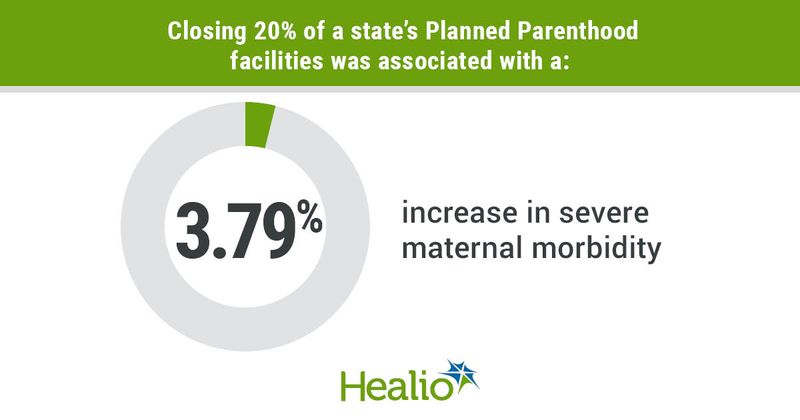Planned Parenthood closures linked to increased risk for severe maternal morbidity
Changes in state-level availability of reproductive health services — namely closures of Planned Parenthood facilities — were associated with severe maternal morbidity, according to a cross-sectional study published in JAMA Pediatrics.
“Planned Parenthood closures and enactment of gestational limits for abortions have been associated with increased maternal mortality, but these factors’ association with increasing severe maternal morbidity remains unknown,” Summer Sherburne Hawkins, PhD, MS, an associate professor in the Boston College School of Social Work, and colleagues wrote.

Hawkins and colleagues used National Center for Health Statistics natality data from 2009 to 2018 to identify blood transfusion, eclampsia and unplanned hysterectomy. They recognized state-level indicators of overall health, reproductive health and economic status using available information on state of residence and month or year of delivery.
The researchers identified laws that imposed abortion restrictions based on gestational age, requirements for abortion practitioners for admitting or transferring patients to nearby hospitals and restrictions on insurance coverage for abortion.
There were 34,630,357 births among people aged 16 to 49 years, of whom 54% were white, 23.9% were Hispanic or Latino, 14.5% were African American or Black, 6.6% were Asian and 0.9% reported a different race and ethnicity.
In total, 184,217 (0.5%) people experienced delivery-related severe maternal morbidity (SMM). The most common was transfusion (0.3%), followed by eclampsia (0.2%) and hysterectomy (< 0.1%).
Rates of SMM in each state ranged from 0.22% in Tennessee to 2.25% in Hawaii, and the prevalence of SMM increased recently, according to the researchers.
Reducing the number of Planned Parenthood facilities by 20% was associated with a 3.79% increase in SMM (95% CI, 1.89%-5.69%). Despite state-level health and economic conditions becoming more restrictive during the study period, there were no differences in SMM associated with these indicators.
Further analyses revealed no evidence of effect modification by race and ethnicity. Hawkins and colleagues posited racial and ethnic disparities in SMM may therefore be related to hospital-level factors. However, more research is needed, they said.
Decision-makers creating future policies restricting reproductive health care should consider the implications for pregnant people, they wrote.










